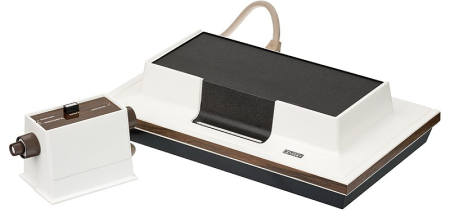A Compendium Of
Gaming Controllers
Since The Dawn Of The Home Gaming Industry
Video games have long enchanted audiences since their first real appearance in 1971 with Computer Space, and with Pong in 1972, which are widely recognized as the titles (and technology) that started it all.
Since then, the hold that video games have had over people around the world has grown exponentially, not only in popularity for at-home gaming, but also in terms of other forms of media like TV shows and films, and massive steps in innovation.
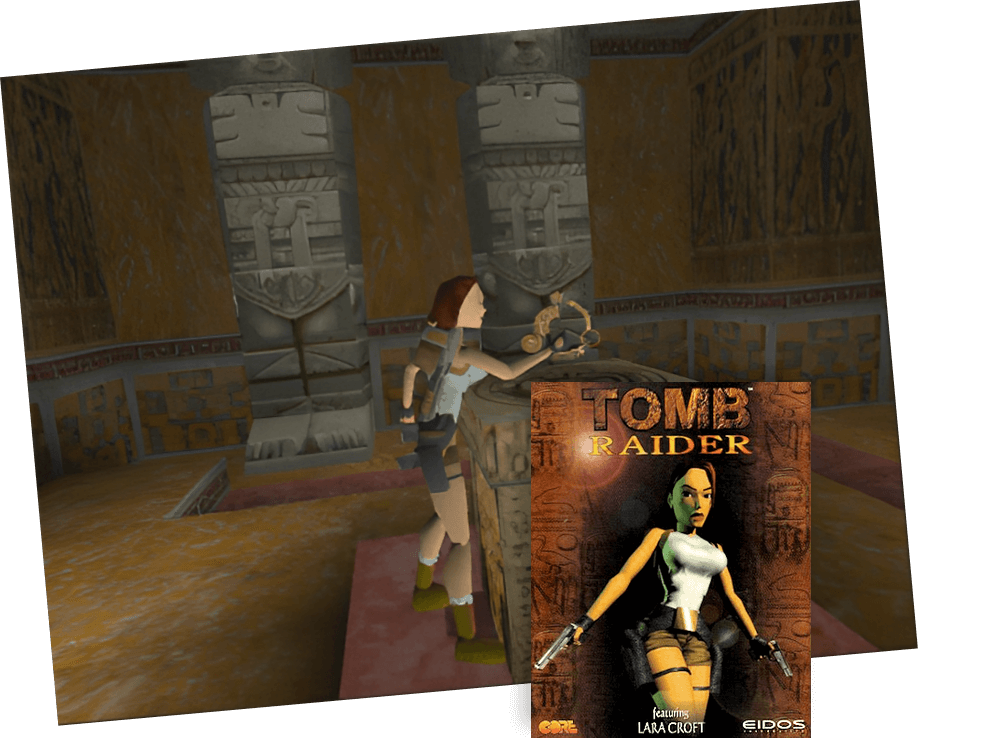
1996
2018
Many are familiar with cult classics that encompass a range of historic gaming platforms and popular media, like the Tomb Raider franchise that first appeared on the Sega Saturn in 1996, which has graced the silver screen in several iterations, and most recently Shadow of the Tomb Raider for PS4 in 2018.
2022
Or, in terms of new and innovative titles, the recent offerings of Elden Ring (2022) and Horizon: Forbidden West (2022) continue to sweep the gaming community, from games journalists and guide writers to fans and reviewers alike.

But whatever way you look at it, from the first arcade games to the latest smartphone offerings, the transition from clunky and substantial gaming consoles to compact and mobile technology has transformed virtually the entire world of entertainment.
As such, the methods of gaming now available are nearly endless and ever-evolving, with innovations coming yearly— with consoles, updates, and accessories becoming more and more ingenious and immersive.
Video games are essentially interactive, and how you can sink yourself into the world of the game differs. PCs, consoles, smartphones, and even virtual reality are all portals for diving into the wide variety of stories available to players.

And if you take even a very brief look at the history of all video game controllers from the Pong onwards, you can tell that it’s an incredible journey— just like many of the narratives, such platforms offer for you to experience.

So, let’s explore the world of gaming stuff and the evolution of video game controllers from the dawn of home gaming until this point, to better understand the saga that has brought joy and immersion to so many people around the globe.
Dominant Video Game
Companies

To begin our journey through the various iterations of video game controllers, it’s important to take a look at the corporate juggernauts of the gaming world that really pushed innovations through and launched the frenzy for these platforms from day one.
You have probably heard of the main companies behind video games these days, including Nintendo, Sony, and Microsoft, as the businesses that put out the Switch, PS4, and XBOX, respectively. But there are a couple more dominant video game companies that pioneered the earliest consoles and video game controllers.
So, let’s explore the top five gaming companies that began the entire craze and continue to promote it to this day, from Atari to Microsoft.
Atari
As the pioneer of the truly retro video game controllers, you might be familiar with the Atari gaming company as the maker of the first commercially successful arcade video game, Pong, in 1972.
But this company actually started in 1971 as Syzygy Engineering, formed by Nolan Bushnell and Ted Dabney. Their first game, Computer Space, came out in the same year but did not receive as much commercial or public attention as they had wanted.

So, the business was rebranded as Atari in the following year and after the initial success of a tennis game released for the Magnavox Odyssey, they released an arcade version of it: Pong, the video game that changed the world and sparked the entire industry.
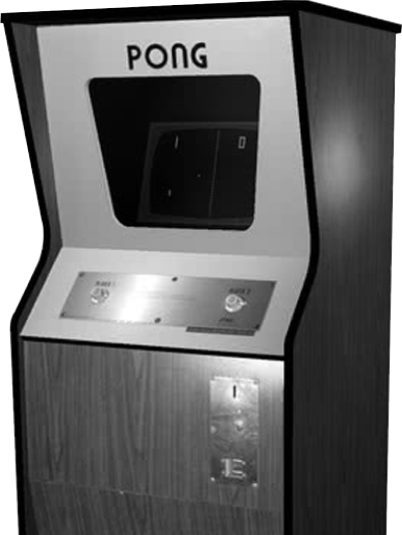
Continuing from the success of Pong, Atari began developing at-home gaming consoles that used joysticks and paddles to control gameplay. These included the Atari-Telegames Home Pong, the Atari Video Computer System, the Atari 800, the Atari 2600, and the Atari 5200.
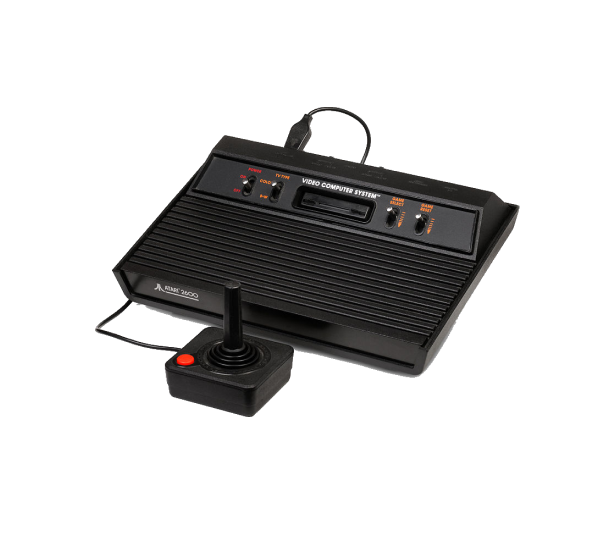
However, due to how expensive these home consoles were, compatibility issues, and the small range of dedicated games for people to play, this equipment was not as initially successful as Atari would have hoped, particularly after the 1983 video game industry crash.
After several years of financial difficulty, the company was virtually all but disintegrated into various other video game holdings, including Namco Bandai and Hasbro Interactive. But it continues to stand as the origins of what we now know as the video gaming controller industry, and introduced retro video game controllers like the Atari 2600 joystick.
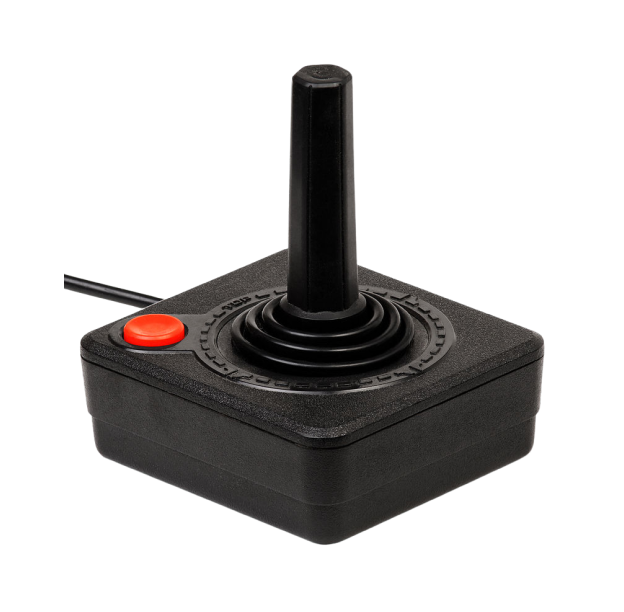
Nintendo
We recognize Nintendo as the producer of the Pokemon and Zelda game franchises, but did you know that Nintendo’s worldwide history actually started back in 1889? Originally founded as Nintendo Koppai, a man named Fusajiro Yamauchi began making Japanese playing cards called “hanafuda”, or “flower cards” during September of that year.
That means Nintendo has been around for over 130 years and has experienced massive popularity ever since creating the company’s first international console in 1977, called the Color TV-Game, and even more so after the release of the classic game Donkey Kong in 1981.

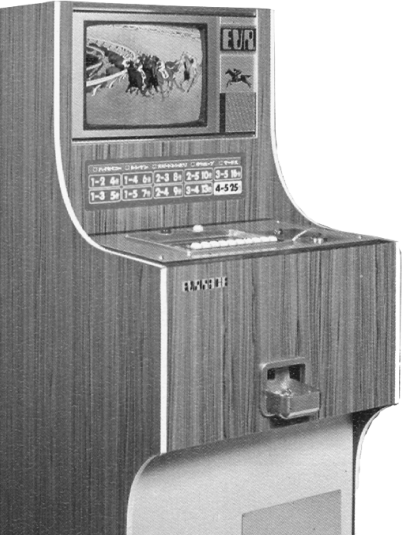

Nintendo moved away from playing cards and board games during the late 1970s, first with the Japanese-only electronic video recording, or EVR, video gaming system, in collaboration with Mitsubishi.
1977
1980s
Following this success, Nintendo began manufacturing worldwide home video game controllers and systems with the TV-Game 15 and 6 consoles in 1977. But their real video game success started in the 1980s, when Nintendo released Donkey Kong, the Famicom and VS. System consoles, and expanded to international sales in the millions.
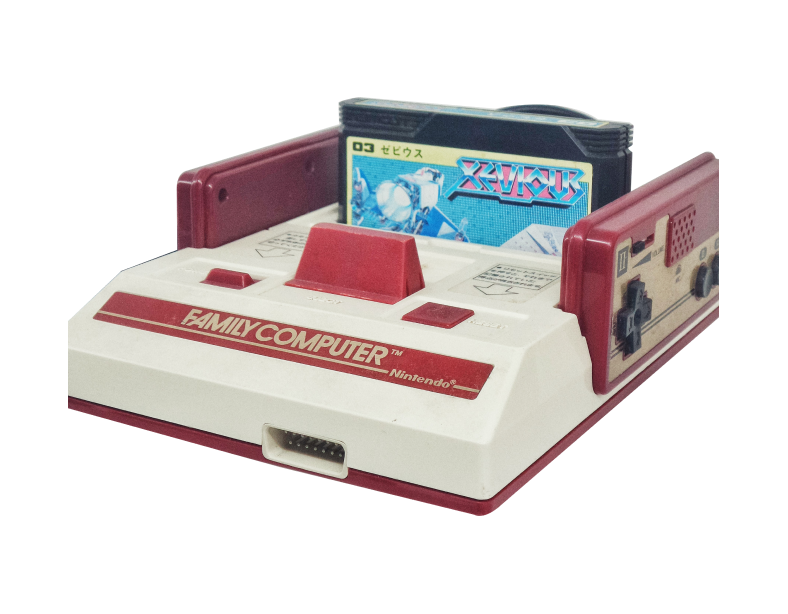
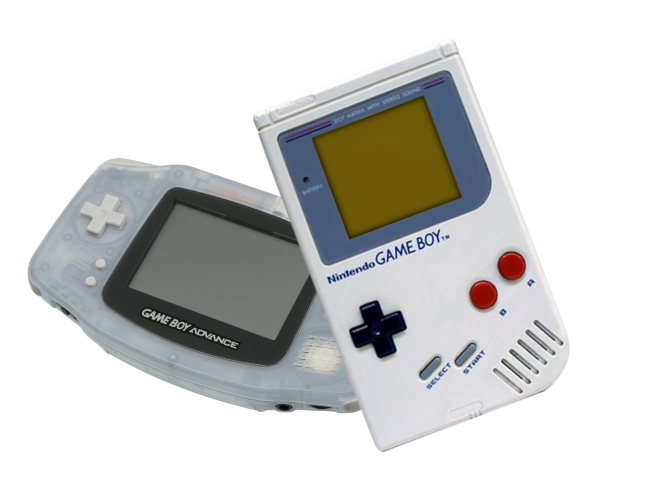
1989
1989 heralded the first Game Boy system in Japan, as the original handheld video game controller, later released in North America and Europe, and the world has not looked back ever since. In fact, Game Boy is certainly the genesis point for popular consoles in the future, including the N64, Gamecube, Wii, and Switch systems.

1990
Next came the Super Nintendo Entertainment System (SNES) during 1990 that saw incredible sales numbers, also thanks to the wide love of various Nintendo franchises already appearing among home gamers. This includes the release of Super Mario World, SimCity, Mortal Kombat, and more.
And while there were future iterations of Nintendo controllers, like the Game Boy Advance and Nintendo DS, the latest offerings by the company such as the Nintendo Switch and Switch Lite are by far the most influential in recent years.
sega

Beginning as a coin-operated gaming company in 1940, Sega is another original entry to the history of electronic gaming companies. And after the release of their first successful arcade game called Periscope in 1966, the company doubled down on the production of gaming systems and controllers.
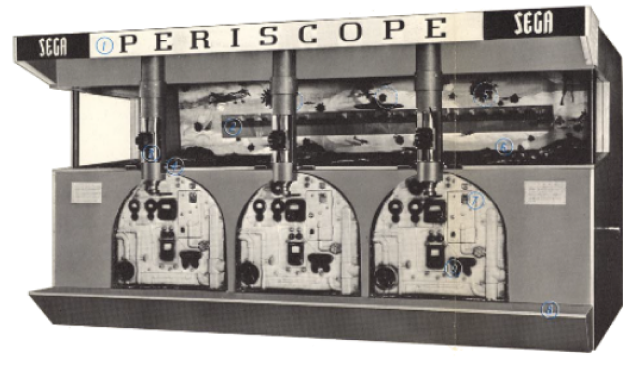
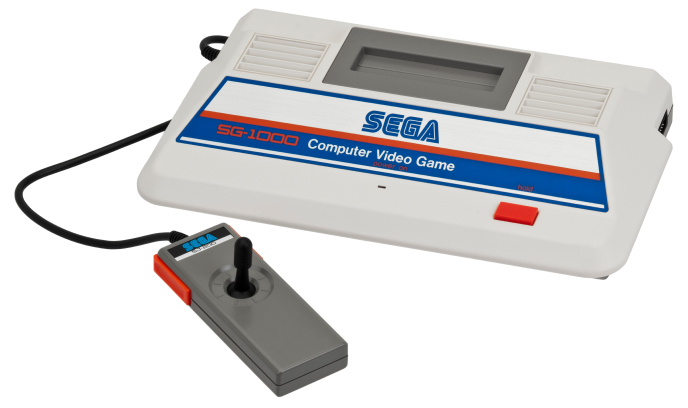
And this was certainly a wise decision, as their first consoles for at-home use, called the SG-1000 and the Master System, were fairly successful, though their biggest competitor was Nintendo.

1991
2000s
However, with the creation of the Sega Genesis system and controller, and Sonic the Hedgehog in 1991, Sega had finally begun their own empire of gaming stuff and consoles that rivaled Nintendo.

1994
1999
From here, the arcade aspect of Sega continued to flourish, with racing games, side scrollers, and more. The Sega Saturn and Dreamcast, in 1994 and 1999, respectively, marked the next era of this company’s prowess, but when financial losses began in the early 2000s, the company was forced to reshuffle its assets.
Now, Sega has a smaller hold on the gaming industry but still has success with games like the Yakuza and Persona franchises, as well as the film series for Sonic the Hedgehog.
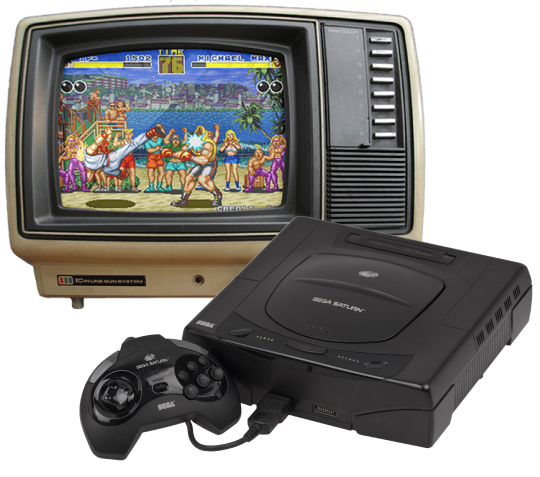
But one of the biggest impacts that Sega has had on gaming and the evolution of video game controllers was the structure introduced by the Genesis and Dreamcast systems.
Not only were both technologically advanced, but the Dreamcast also had advanced multiplayer support and was the very first controller to include a DLC— something that many people can’t imagine being without these days, and which revolutionized the world of gaming.
Sony
As we arrive at another monolith in the gaming world, it’s hard to separate the world of gaming from the corporation of Sony Interactive Entertainment, the home of PlayStation consoles.
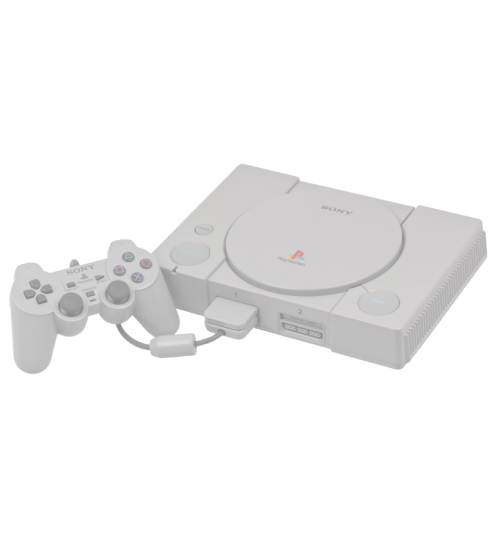
1994
The first wired PlayStation system arrived in 1994, and it was a new type of 32-bit console that nearly immediately rocketed Sony to international acclaim.
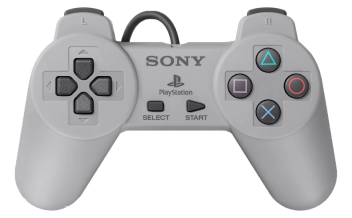
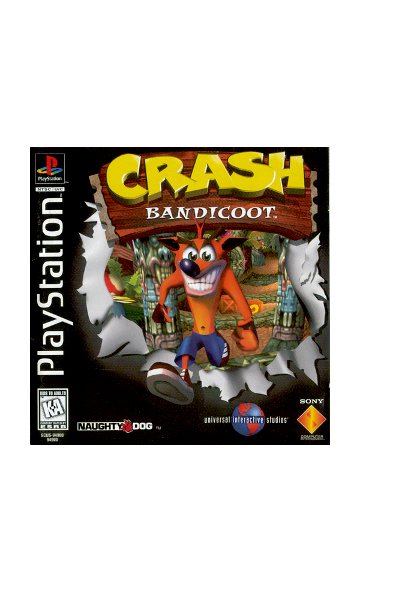
Some of the reasons for this imminent popularity included an easier style to be held in gamers’ hands, much better graphics, and significantly more buttons than other competing controllers as a gamepad. Because of this, and the later release of fan-favorite games like Crash Bandicoot and Final Fantasy, gamers kept sales going.

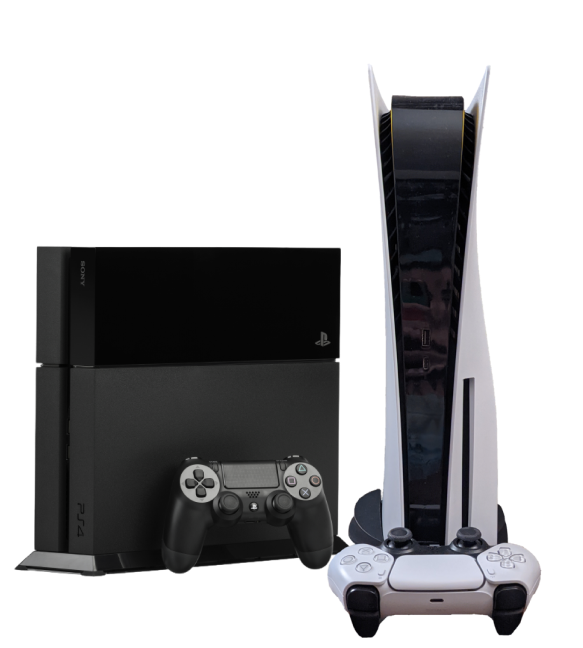
2000s
After the PlayStation 2 and PlayStation 3 launched in the early and mid-2000s, respectively, the competition between Sega, Nintendo, and PlayStation continued to be fierce. For example, the PlayStation 2 outsold the Sega Dreamcast, but the Microsoft XBOX 360 outdid the PlayStation 3.
But as the latest releases of the PS4 and PS5 have subsequently proved, PlayStation has carved out a place for itself as the best gaming controller option that Sony provides.
Microsoft
Lastly, but certainly not least, Microsoft’s foray into the wide world of gaming. One of the most fascinating parts of the role that Microsoft has in video games is the influence within both PC gaming and the consoles or controllers, both of which have lasted until today.


But before Microsoft branched into home-gaming consoles in the early 2000s, the computer company monolith already had a Games Group that produced content for PC gamers, including classic titles like Microsoft Flight Simulator in 1982.
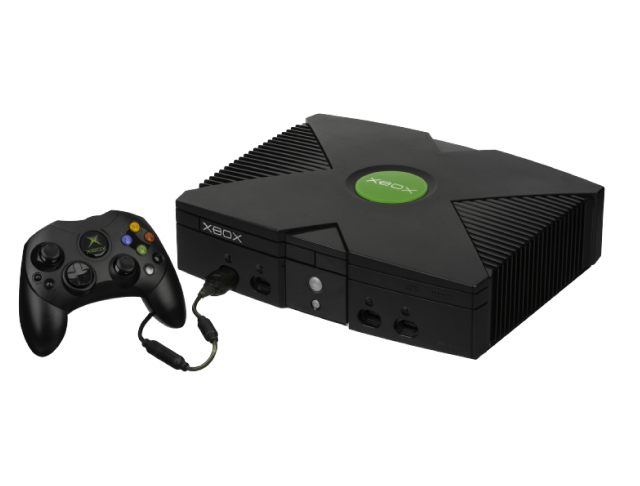
This was especially influential, given the company’s creation of Microsoft personal computers, operating systems, and other accessories that completely revolutionized the idea of technology within the home. Other games like Age of Empires were able to bring even more gamers into the fold, and promote PCs further.
And when it came to exclusive gaming consoles, the first XBOX was released in 2001 under the new division of Microsoft Games as a competitor to the incredibly successful PlayStation 1.
2005
However, it was with the XBOX 360 in 2005 that Microsoft pioneered yet another innovation in the world of technology and home gaming, as a console that supported wireless technology for the controller connection.
From here, Microsoft introduced XBOX Live and XBOX 1 in order to take the multiplayer experience to the next level, and later the XBOX One.
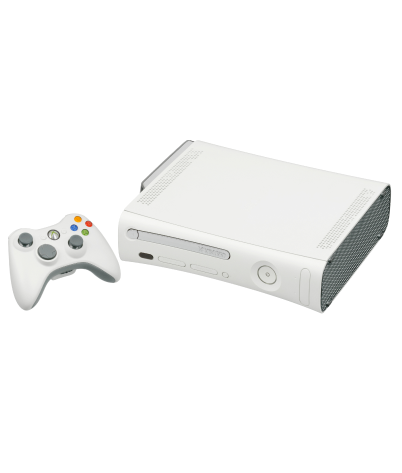
Structure And Design
Changes

Now that we have a basic understanding of the history of most dominant video gaming companies and how they created an ever-evolving series of controllers, it’s worth taking a quick look at the structural and design changes implemented.
As with many other technological advances, games controllers have had to go through trial and error that led their manufacturers to either experience losses or gains in capital.
And, by keeping an eye on what the consumer wants and how changes could be implemented, controllers have gone from a joystick to DualShock bumper action or even virtual reality sensors.
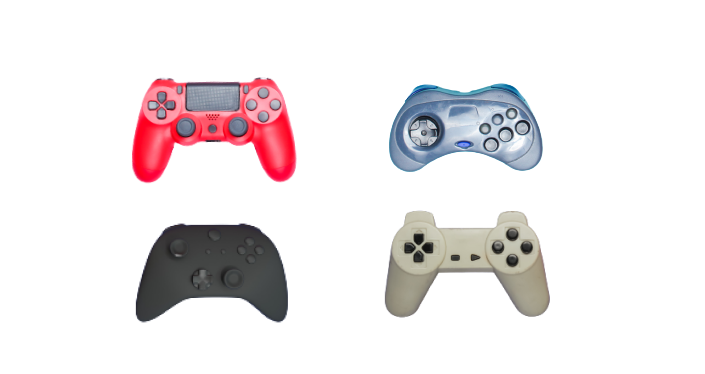

Such changes can be seen stemming not only from the physiology of gamers and the way controllers fit into their hands, but also the ease with which controllers manipulate the minute actions of gameplay, particularly in careful actions like aiming and shooting.
So, let’s consider the main structural and design changes from retro video game controllers to the ones of the modern era.
1970s
During this time, directional control was mastered with a joystick that could guide movement in 8 different directions. And while this was effective, it was also quite cumbersome and difficult for fine motor reactions, but Atari still remained the top competitor for such joystick directional gameplay.
Additionally, you could find simple trigger buttons with “pistol-grips” for shooting games, and the fairly short-lived directional disk or rollerball that controlled movement with your thumb.
And as controllers branched into more button-based controls, the industry saw the addition of number pads (such as Intellivision) or pause buttons that quickly turned into more adaptive press-point manipulations.

1980s
1990
The emergence of shoulder buttons and thumbsticks during the 1980s and 1990sheralded the journey towards more modern and comfortable controllers, with forms that were made specifically for the gamers’ hands.
Additionally, having buttons to pause and start the game emerged, as well as a cross-directional arrow gamepad (or D-pad) that would change everything.

1980s
1990
As technology started leaning towards being wireless, gamers sought out longer cords to extend viewing space away from the TV screen, and manufacturers responded accordingly. Controllers at this time also incorporated better D-pad functions that were kept simple, such as with the XBOX and PlayStation.
Plus, as the PlayStation controllers came out, gamers started to see multiple buttons with the classic labels of a circle, cross, triangle, and square to differentiate each function, and other companies took note— including Microsoft’s response with A, B, X, and Y labels.

1980s
1990
Finally, battery-powered controllers were introduced during the wireless and motion-activated era of gaming technology. This included automatic connections, motion sensors for hand and arm movement, and corresponding actions within the video gameplay.
For example, this was the era of the Nintendo Wii, PlayStation Move, and Microsoft Kinect, as each of the remaining major gaming companies shot for public popularity when it came to this new and exciting ability for remote characters and gameplay control.

Video Game Controller
Timeline

Now we arrive at the actual compendium of the most popular and influential video game controllers in the timeline of at-home gaming. As such, let’s discuss a brief overview of each gaming system’s controller, its appearance, and how the technology worked.
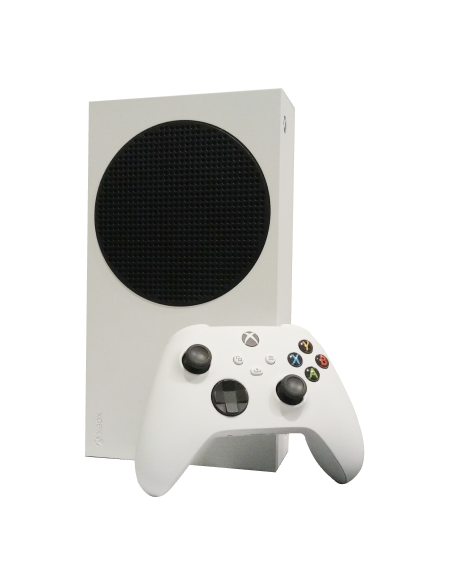
2020: XBOX Series X
The most recent installment in Microsoft’s gaming line, the XBOX Series X was released with hardware enhancements, better graphic resolutions, and high-speed download processors.
In terms of the video game controller itself, the XBOX Series X retains much of the previous model’s features, but was reshaped to be compatible with more hand sizes in the gamer community. There are also several new function buttons to make the multi-media connection and game sharing easier.
Where this console does differ greatly, however, is in the shape and size of the unit. While the controller is not incredibly different from previous iterations, many gamers note the change to a rectangular console that is quite hefty.
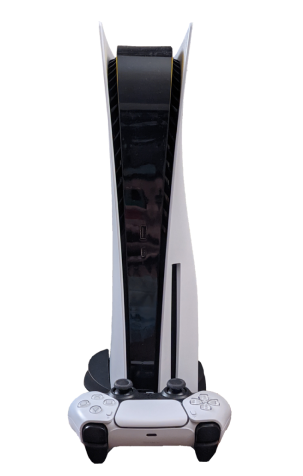
2020: PlayStation 5 DualSense
As Sony’s latest PlayStation offering, the PS5 was highly anticipated and hard to get your hands on. However, it also features a variety of new features and enhanced gameplay options that make it worth the wait in many gamers’ opinions.
High-speed gameplay and data processing, better resolution capacities, and smoother updates are all included in the PlayStation 5 console itself, as well as the controllers’ haptic feedback for more immersion and increased adaptive triggers for easier aiming, shooting, and viewing on-screen.
The console unit and controller are both larger than the PS4 model, but the DualShock controllers still fit comfortably in the hand and feature enhanced gamepad functions, as well.
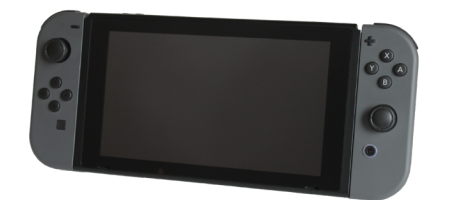
2017: Nintendo Switch
The Nintendo Switch addition to this line of consoles was an exciting establishment in the world of video games, mobile play, and multi-functional video game controllers.
Not only can you play the Switch as a handheld gaming tablet, but you can also use the console dock to attach the screen itself to your TV and use the Switch handles as essentially Wii Remotes with motion sensing, or clip them together to form a DualShock controller look-alike.
The Switch has certainly taken the mobility of Game Boys and brought it into a new era, and remains a very interesting step towards the future of what gaming, consoles, and controllers can be.
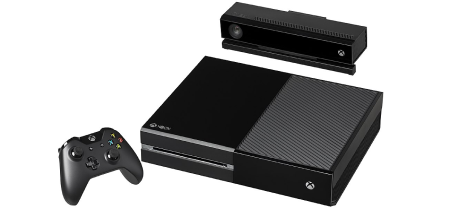
2013: XBOX One
Not only did Microsoft use development time in the XBOX One to optimize the controller grips, placement of the buttons, and properly weight the thumbsticks and shoulder buttons, but the system itself was functionally rejuvenated with quieter processors and multi-media abilities.
And, when compared to the XBOX 360, the hardware used in this model was much improved, prolonging the lifespan of these units significantly which received good ratings from users.
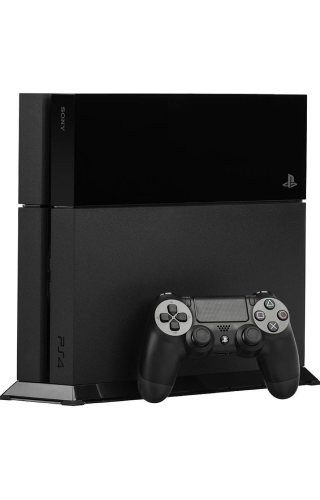
2013: PlayStation 4 DualShock
Introducing a touchpad as the only company in the top three to include one, Sony and PlayStation really thought outside the box with their PS4 console. Many of the improved features revolved around the controller setup itself, with better friction on thumbsticks and shoulder bumpers, and easier setup and share buttons.
In addition, the PlayStation 4 console itself featured better graphics, easier downloads, and a smoother playing experience, remaining one of the top-selling systems of all time.
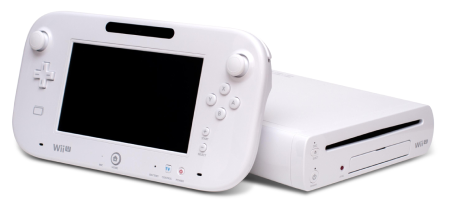
2012: Wii U
Essentially an early version of the Nintendo Switch, the Wii U was touted as a more mobile version of the Wii. More features include online access for social networking through Nintendo’s “Miiverse” platform and advanced gamepad control, but some users found it much more cumbersome than the individual Wii Remotes.
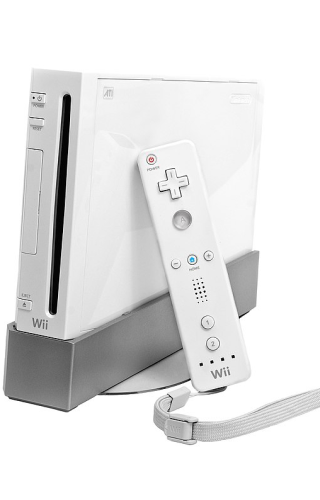
2006: Nintendo Wii
Many people remember the excitement of motion sensors included in your gaming controller, leading to actively influencing the gameplay on your TV screen.
Moreover, the Nintendo Wii console and controllers (or Wii Remotes) were a major breakthrough, allowing the games industry to not only tap into motion-activated gaming, but also branch into the health and fitness market with Wii Sports and other incentives to get your body moving and have fun.
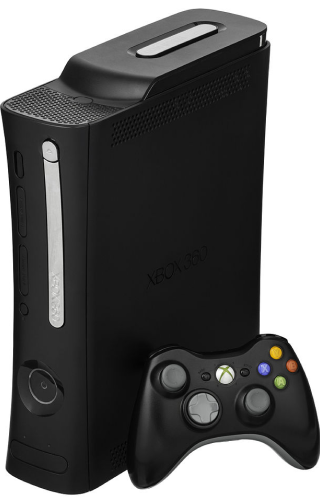
2005: XBOX 360
The first Microsoft XBOX series to offer online features with XBOX Live, the 360 quickly became a popular addition to households. In fact, gamers were finally able to branch out with their console use, including live music and TV, downloading online games and demos, and accessing third-party streaming services.
The XBOX 360 really changed the way the world viewed gaming consoles, as a full entertainment service, outside of simply logging into a game for an hour by yourself.
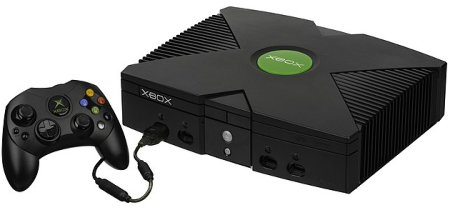
2001: XBOX
Finally, Microsoft entered the world of video game controllers and consoles with the first XBOX model.
And though the first iteration was followed fairly quickly by an enhanced version, the original XBOX featured many essential functions that would help shape the way controllers were made, including more buttons and staggered thumbsticks for easier aiming, running, and looking in-game.
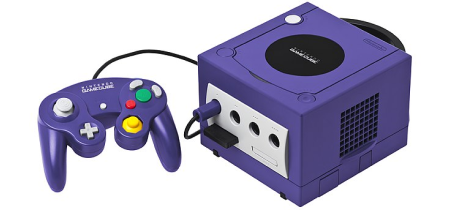
2001: GameCube
As one of the first console systems that allowed for connection to a mobile unit like the Game Boy, Nintendo’s sixth model supported online gaming, cube-only features, and even memory card save data, thanks to the innovative e-reading format within the unit itself.
It was one of the consoles with the widest range of available games, and even the ergonomic capabilities of the controller were highly anticipated.
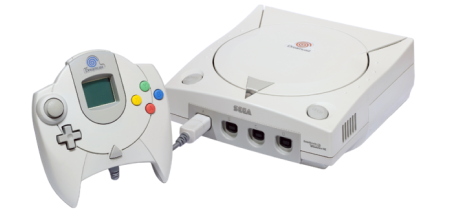
1998: Sega Dreamcast
The Dreamcast turned out to be Sega’s final contribution to the console world of video gaming, as it launched successfully but eventually was overshadowed by the PS2.
However, the addition of a viewing screen to the console itself was possibly the precursor to handheld gaming such as the Game Boy and even Nintendo Switch, as very similar mechanics became popular soon after.
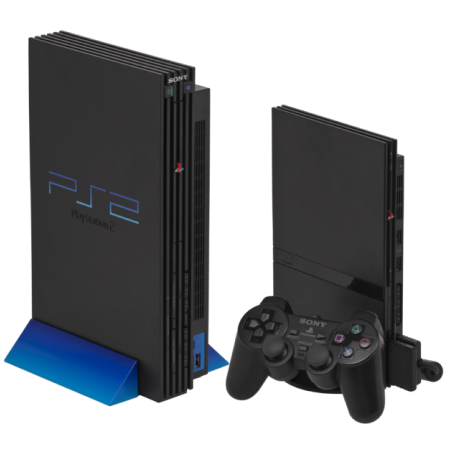
1997: PlayStation 2 DualShock
PlayStation console editions came out fairly quickly in succession, as Sony capitalized on the success and popularity of their products.
Enhancements to the PlayStation 2 included the DualShock 2 controller with a rumbling motor, better memory card space in the console, and easier thumbstick action for precise movements.
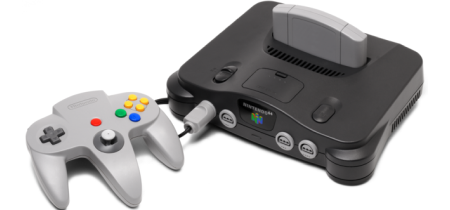
1996: Nintendo 64
Any viewers might notice the Nintendo 64 system appears to be an outlier, even if just for the peculiar controller shape. In fact, this follow-up to the SNES was made in an attempt to mimic better ergometric designs but ultimately was not a success. However, the button and D-pad features were a good start!
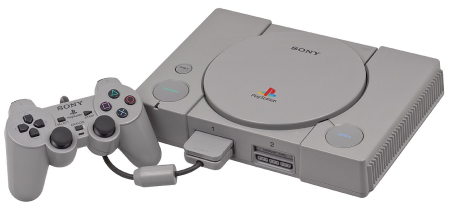
1994: PlayStation 1
Sony’s first marked foray into the realm of consoles and gaming controllers, the PlayStation 1 featured ergonomic handholds, thumbsticks, and a quartet of buttons that gave full control to the player.
This is also when 3D graphics were put forefront in Sony development, leading to a whole new era in video game quality and gaming content.
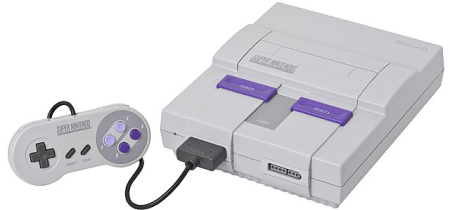
1990: Super Nintendo Entertainment System (SNES)
Another installment in Nintendo’s console lineup, the SNES was a fan favorite due to better graphics and game cards that were directly enhanced for quality.
Plus, it’s one of the best outcomes from the 16-bit console craze that would soon dissipate in favor of much cleaner graphics and processors, and many people remember their SNES units fondly.
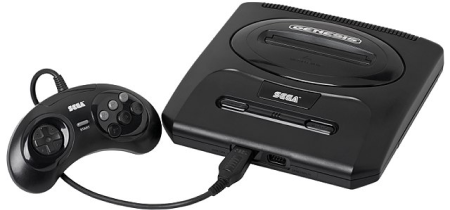
1985: Sega Genesis
This successor to Sega’s previous Master System console was successful in North America and Europe, including the Sonic the Hedgehog franchise, the great visual chips, and the audio capabilities of this console.
The directional D-pad on this controller also began to take a defined form, with more buttons for better character control as well, leading to good user reviews.
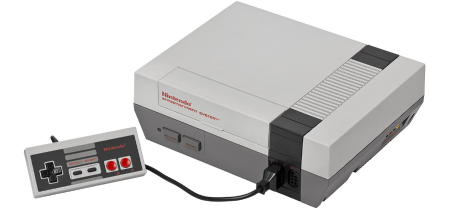
1983: Nintendo Entertainment System (NES)
As the redesigned version of the Nintendo Family Computer for North American and European audiences, the NES was incredibly popular and used controllers for individual players, joysticks, and a cassette drive for more gaming title options.
This home platform by Nintendo truly paved the way for what was to come, and test markets began to go wild for the console and the range of new games also released, including Super Mario Bros.
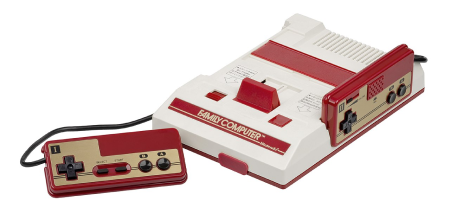
1983: Family Computer
Previously referred to as the Famicom upon release in Japan, this was a great innovation by Nintendo and became a successful console within those franchises.
Gamers could also opt for add-ons like guns and paddles to access other types of Nintendo titles, and the early D-pad and labeled button functions on Family Computer controllers were a step into modern video gaming.
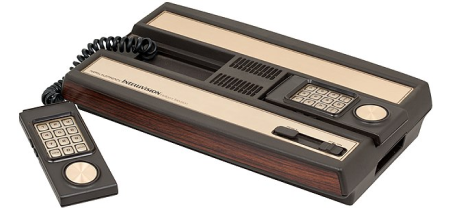
1979: Intellivision
As one of the only gaming console models to incorporate number pads, this system was an early ancestor of controllers that now have a fully functional D-pad. The Intellivision was released by Mattel and was the only console the company created until the mid-2000s.
Interestingly, the audio chips on this unit produced quite a good sound, and a golf game cartridge sold even had real-world swing-and-strike noises when connected to the television.
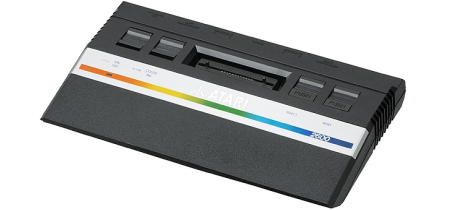
1977: Atari 2600
For the year 1982, the Atari 2600 enjoyed unmatched popularity as a home gaming system. It was able to play a variety of 2 KB Atari games that could be swapped in and out, and controlled movement with a joystick.
However, this model did not survive the crash of 1983 experienced throughout the industry, and became defunct after the launch of the NES.
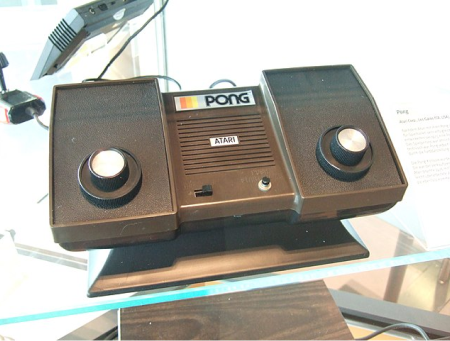
1974: Home Pong
As Atari transitioned its incredibly popular arcade game down from a full game box to an LSI chip that could be integrated into home gameplay, the Home Pong console was also optimized for television connection.
The unit relied on two knobs to control the dots on a TV and was a favorable prototype of modern consoles at that time, though the high price of Home Pong made it difficult to sell.
Conclusion

In all, video game controllers are essential to the experience, and have been since day one. And it’s truly incredible to view the evolution of the gaming controller from simple 8-say joysticks to ergonomic handhelds with vibration motors for an immersive effect.
As such, the entire home gaming industry has relied on the advancements and relationship between controllers and consoles to continue getting better, more comfortable, and remain affordable.
And while it might seem preposterous that we once relied on a small thumbwheel to move gameplay instead of state-of-the-art thumbsticks that are weighted for precise on-screen action, it’s an incredible exploration to look into the history of how gaming has gotten to where it is today.
- What were the first ever video games and when were they created?
- What are the most recent innovative games created in 2022?
- How has the method of playing video games evolved in recent years?
- What are the most dominant video game companies?
- How has Atari been a pioneer for the video game industry?
- How has Nintendo contributed to the mass popularity of video games?
- What video game consoles has Sega made and how have they been influential?
- How has Sony been influential in the video game community?
- What video game consoles has Microsoft made and how have they been influential?
- How has the structure and design of video game controllers changed over the years?
- What is the overall timeline of video game controllers?
- What was the first ever video game console?
- Tv Family Room Sofa
- Traditional Recliner Chair
- Best Sectional For Basement
- Theater Seats For Home Sale
- Movie Theater Seats Price
- Recliners Leather Recliners
- 2 Seat Home Theater
- Media Room Sectional Couches
- Sales On Couches
- Theatre Room Furniture Ideas
- Black Furniture Sets
- Home Theater Seat Store
- Good Media Room Chairs
- Best Furniture For Theater Room
- Movie Theater Recliners
- Theater Seating Heated And Massage
- Blue Sectional Recliner
- Stallion Xl200
- Theater Recliners Electric
- Red Home Theatre Seats
- Big Popcorn Machine
- Red And Black Leather Seats
- Headrest Recliner
- Octane Bolt Xs400
- Brown Modern Couch
- Buy Risers
- Home Theater Seating Accessories
- Bass Shakers Home Theater
- Angel Chairs
- Azure Blue Leather Reclining Loveseats
- Recliner Set
- Modern Bonded Leather Sectional Sofa
- Small Power Recliner Home Theater
- Man Cave Couch
- Black Leather Seats
- Sofa And Chaise Set
- Leather Sectional Sofas
- Fabric Home Theatre Seats
- Recliner
- Home Theater Audio
- Best Chairs
- What Is A Interior Designer
- Home Theater Seating Guide
- Best Home Theater Design
- Types Of Speaker Wires


